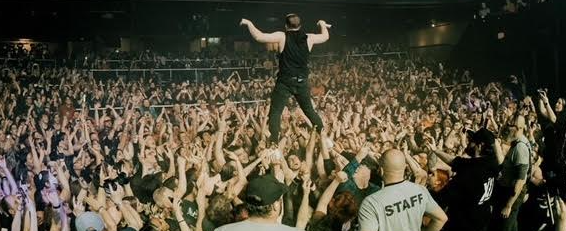Pink Floyd’s Construction of The Wall

Roger Waters performed Pink Floyd’s classic The Wall at the Palace of Auburn Hills in Michigan. (Kathleen Galligan/Detroit Free Press/MCT)
Forty years ago, The Wall, re-shaped the way musicians created albums and helped cement Pink Floyd’s legacy among some of the greatest bands ever.
In 1979, English rock group Pink Floyd released their milestone concept album, The Wall. Following a six-year stretch of critically acclaimed albums, such as The Dark Side of the Moon and Wish You Were Here, Floyd’s bassist and vocalist, Roger Waters, honed all of his creative ability to build The Wall.
Despite being the band’s eleventh studio album, it was their most ambitious album to date. The rock-opera was unlike any major album ever recorded.
With 26 tracks spanning a total of 80 minutes, the album had more music than some listeners were ready for, but it was necessary to tell the story that Waters had elaborately crafted.
The story follows a young rock-star, Pink, inspired by Syd Barrett, the estranged founding member of the band who was the main focus for Pink Floyd’s melancholic 1975 album, Wish You Were Here. Barrett’s drug abuse had led to his removal from the band and a steep downfall of his mental state.
Waters blended the story of his rise to fame and Barrett’s heartbreaking fall from grace to develop the story for The Wall.
The story follows Pink as he builds a metaphorical “wall” around himself following a trauma-filled childhood. Pink defies his tyrannical teachers, his overprotective mother and his unfaithful wife in order to fix his life for the better.
Themes of depression, drug abuse, guilt and isolation plague the character in his journey for self-peace.
Songs like “Another Brick in The Wall Part 2” and “Comfortably Numb” became chart-topping hits for the band and helped propel the album to the top spot on music billboards around the world.
Produced by music industry legend Bob Ezrin and recorded in several different locations around France, every track was meticulously written by Waters and the whole project was his vision.
The project turned the music world on its head. Not many bands had the ambition of producing a concept album, let alone one as epic as The Wall.
Alongside the album, the tour was one of the biggest ever put together: a theatrical exposition featuring huge sets, props and other grand set pieces that blurred the line between rock show and Broadway musical.
The band only played a relatively small 31 shows compared to the 132 the band performed for The Dark Side of the Moon Tour. Due to the grandness of the tour and the small number of shows, the band lost $600,000, just over $1.5 million in today’s money.
Forty years later, The Wall has influenced many progressive rockers and is now a staple of classic rock. Rolling Stone magazine ranked The Wall as the 87th best album of all time on their “500 Greatest Albums of All-Time” list.
The expansive artistic universe the band created through ventures previously untested by other groups proved the true dynamic artistry of Pink Floyd and cemented Waters’ legacy among some of the best songwriters ever.
The album is still on a pedestal with some of the greatest projects ever and it laid out a convoluted blue print for other bands to create amazing concept albums that stretch far beyond the music itself.





